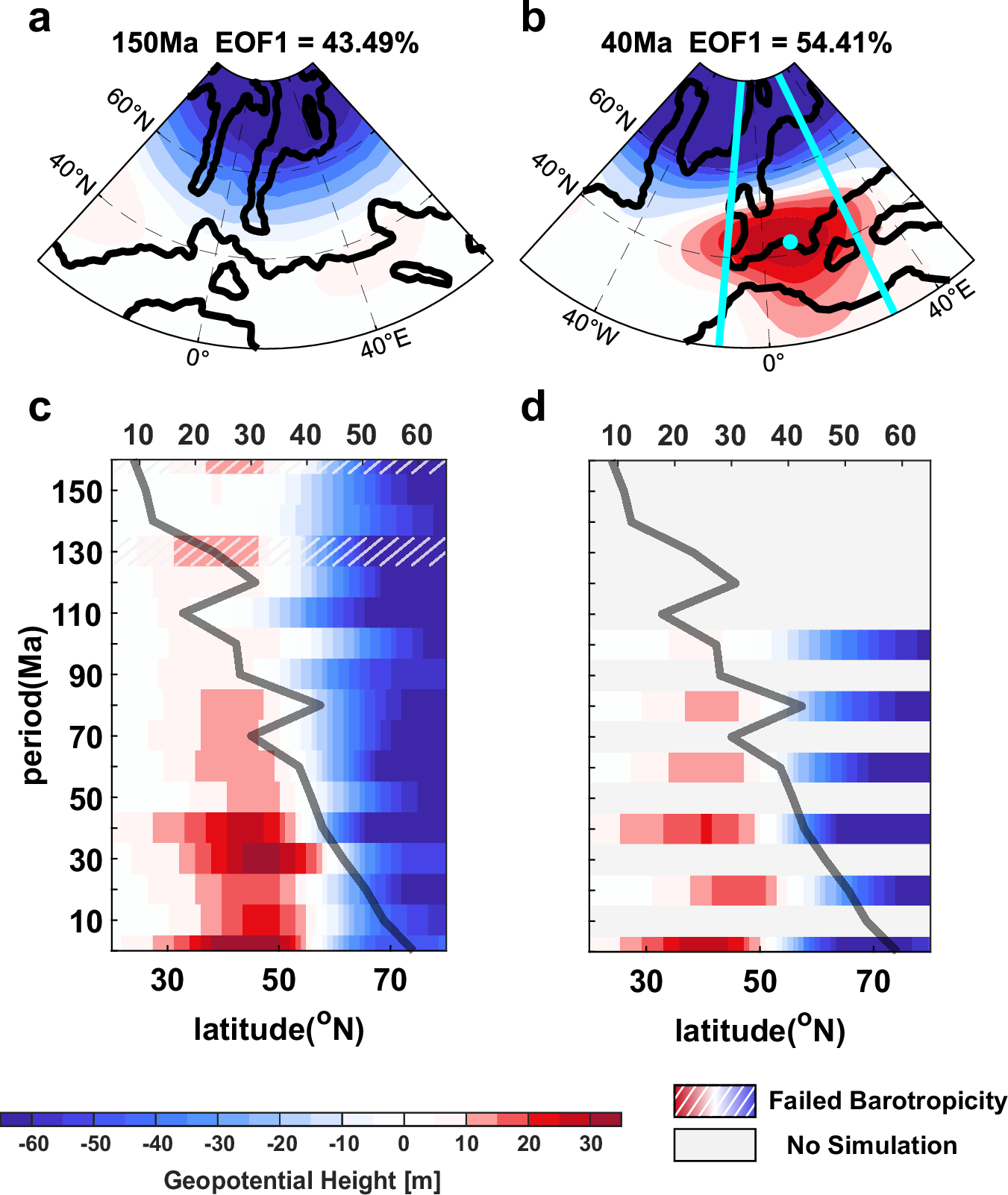2025-03-31 北京大学(PKU)
<関連情報>
- https://newsen.pku.edu.cn/news_events/news/research/14816.html
- https://www.nature.com/articles/s41467-025-57395-4
北大西洋振動の起源と進化 Origin and evolution of the North Atlantic Oscillation
Zhihong Song,Ji Nie,Panxi Dai,Zhongxi Lin,Jiaqi Guo,Jiawenjing Lan,Xiang Li,Qifan Lin,Zihan Yin,Jun Yang,Yonggang Liu,Haijun Yang & Yongyun Hu
Nature Communications Published:03 March 2025
DOI:https://doi.org/10.1038/s41467-025-57395-4

Abstract
The North Atlantic Oscillation (NAO), the dominant mode of atmospheric variability in the North Atlantic region, plays a crucial role in weather and climate. Here, to investigate when the NAO emerged and how it evolved over geological timescales, we analyzed time-slice paleoclimate simulations during the breakup of the supercontinent Pangea, starting 160 million years ago (Ma). Our findings indicate that a present-day-like NAO mode gradually formed between 80 Ma and 60 Ma, driven by the expansion of the North Atlantic Ocean and the enhanced land-ocean contrast. This expansion led to a regime transition in Northern Hemisphere winter circulation, characterized by a westward shift of the North Atlantic jet, a strengthening of the North Atlantic high pressure and storm track, and the emergence of NAO-like variability. The confluence of orographic effects of the Rocky Mountains also contributed to the strengthening of the NAO. This study depicts the evolutionary history of the NAO over geological time and reveals its coherent relationship with the evolution of continents and orography.



